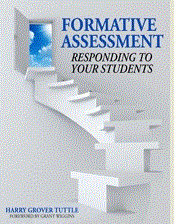 Having been both a technology integration teacher and a district technology administrator, I realize that teachers accept and implement a technology when they feel that the technology will help their students to learn and it is easy to implement. Often times, teachers have no idea of how to to use the technology in their classrooms. Frequently, professional development gives general examples such as those from the technology company but it does not provide examples specific to a subject area. As I thought of how to help more teachers integrate mobile learning into their classes and, particularly, their modern language classroom, I decided to create a book which shows a wide variety of mobile learning activities.
Having been both a technology integration teacher and a district technology administrator, I realize that teachers accept and implement a technology when they feel that the technology will help their students to learn and it is easy to implement. Often times, teachers have no idea of how to to use the technology in their classrooms. Frequently, professional development gives general examples such as those from the technology company but it does not provide examples specific to a subject area. As I thought of how to help more teachers integrate mobile learning into their classes and, particularly, their modern language classroom, I decided to create a book which shows a wide variety of mobile learning activities.
I focused on a book to improve to students’ modern language communication and culture awareness through mobile learning tools and apps. I developed in-class and out-of-class learning in fourteen different categories of mobile learning (mobile pictures, internet search, internet image search, timer, poll and survey, QR code, voice and video recording, phone, video chat, media, apps, texting, twitter, Facebook, Wikis and Websites).
Over 70% of these interactive mobile activities help develop students’ speaking skill; other language activities include listening, reading, writing and assessment. The students participate in authentic culture through these mobile activities.
I developed mobile activities that are easy to integrate.
Please share this ebook link (http://bit.ly/90mlact) with your modern language teachers, modern language chair, professional development person, and technology integration person to help them see the many ways to use mobile learning in modern languages.
My three formative assessment books, Formative Assessment: Responding to Your Students, Improving Foreign Language Speaking Through Formative Assessment, and Successful Student Writing Through Formative Assessment, are available at http://is.gd/tbook
My modern language blogs are now at http://bit.ly/imprml
I have developed 25 Spanish activities and 4 Modern Language Visual activities that allow students to begin to express themselves in the modern language and to begin to move toward spontaneous speaking Teacherspayteachers: http://bit.ly/tpthtuttle






